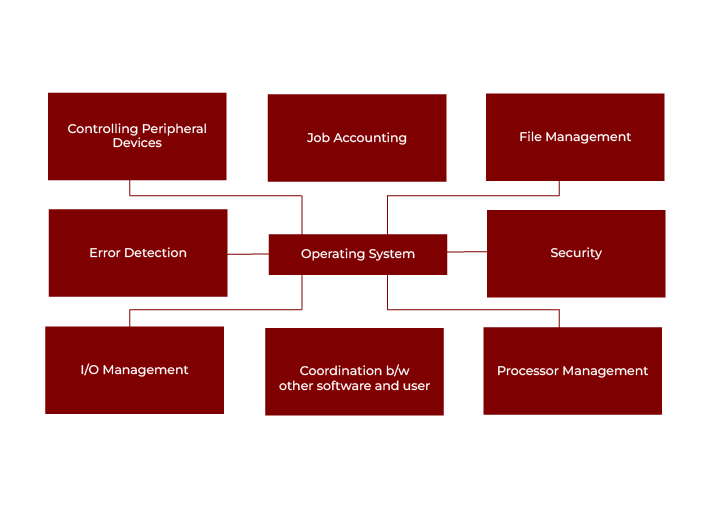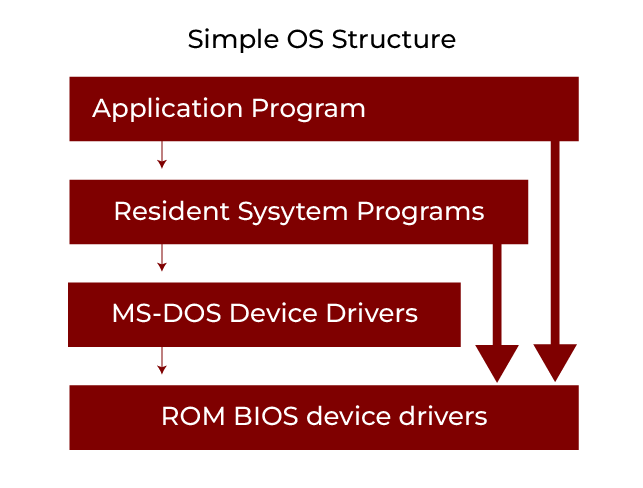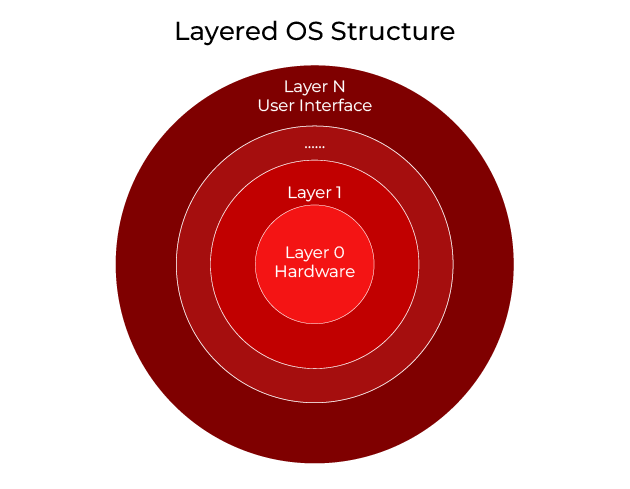Various structures exist to implement the operating system. In most cases, an OS’s structure is based mostly on how its standard parts are connected and merged into the kernel. This article discusses several operating system implementation structures and explains how and why they work.
What is an Architecture Operating System?
A system structure for an operating system shows how OS components work together within its organisation. Operating systems include several parts, so we build their structure in a way that makes sense to everyone who uses them. Dividing OS development into small parts simplifies handling, as we solve bigger issues through their separate components.
Every part of the system contains an operating system function. Blending various operating system components in the kernel represents the fundamental design of the operating system. As you will learn throughout this discussion, many different methods exist to create operating systems.

POSTGRADUATE PROGRAM IN
Multi Cloud Architecture & DevOps
Master cloud architecture, DevOps practices, and automation to build scalable, resilient systems.
Layered Architecture of Operating System
The layered structure of an operating system is a design approach in which the system is divided into multiple layers, each with specific functionalities and responsibilities. This architecture simplifies system design, enhances modularity, and improves maintainability. Here’s a detailed explanation of the layered structure of an operating system:

Operating System Architecture Diagram

Types of Operating System Structures
There are many types of operating system structures. Let’s discuss each one by one.
- Simple Structure
- Monolithic Structure
- Micro-Kernel Structure
- Hybrid-Kernel Structure
- Exo-Kernel Structure
- Layered Structure
- Modular Structure
- Virtual Machines
Also Read: 5 Major Types of Operating Systems Explained
1. Simple Structure
A simple-structure operating system runs small, easy-to-understand systems with no clearly defined internal design. Its different user modes and capabilities have unclear boundaries. MS-DOS is an example of such an operating system. Under the MS-DOS standard operating system, applications gain basic I/O system access. With this style of operating system, when any user programme breaks, the entire system stops working.

Advantages of Simple Structure
- This delivers better application performance because of the few interfaces between the application programme and the hardware.
- This makes it easy for kernel developers to develop such an operating system.
Disadvantages of Simple Structure
- The structure is very complicated, as no clear boundaries exist between modules.
- It does not enforce data hiding in the operating system.
2. Monolithic Structure
A monolithic structure is an architecture in which the entire operating system is implemented as a single large process in kernel mode. This combination of operating system services, such as process management, memory management, file system, and device drivers, is essential for achieving a single source code block.
Advantages of Monolithic Structure
- It improves the performance of the monolithic structure, which is fast because everything runs in a single block. Therefore, communication between components is quick.
- This is easier to build because all the parts are in one source code block.
Disadvantages of Monolithic Architecture
- It is hard to maintain, as a small error can affect the entire system.
- There are also some security risks in the Monolithic architecture.
3. Micro-Kernel Structure
A microkernel design is the term for an operating system design. It aims to run the OS’s core functionality in the kernel space and shift all others, like device drivers, fill systems, and network protocols, to the user space. This modularity increases the system’s stability, security, and maintainability.
Advantages of Micro Kernel Structure
- This makes the operating system portable to various platforms.
- As microkernels are small, they can be tested effectively.
Disadvantages of Micro-Kernel Structure
- It is an increased level of inter-module communication that degrades system performance.
4. Hybrid Kernel Structure
A hybrid kernel structure combines a monolithic kernel structure and a micro kernel structure. In this way, the system combines the properties of monolithic and microkernel, which is a more advanced and helpful approach. This also implements the speed and design of monolithic structures and the modularity and stability of microkernel structures.
Advantages of Hybrid Kernel Structure
- This offers a good performance as it implements the advantages of both structures in it.
- This supports a wide range of hardware and applications.
- Implementing a micro-kernel approach provides better isolation and security.
- Implementing a micro-kernel approach provides better isolation and security.
- This enhances system reliability by separating critical functions into micro-kernels for debugging and maintenance.
Disadvantages of Hybrid Kernel Structure
- It increases the system’s overall complexity by implementing both structures (monolithic and micro) and making the system difficult to understand.
- This communication layer between the micro-kernel and other components increases time complexity and decreases performance compared to a monolithic kernel.
5. Exo-Kernel Structure
MIT has developed an operating system, Exokernel, that allows application-level management of hardware resources. The exokernel architecture splits resource management and protection to achieve application-specific customization. Since exokernel size is limited by its operability, exokernels are therefore small.
The OS sits between the hardware and the software, and as such, it will impact the functionality, performance, and scope of the apps written on it, and the OS will always be involved. The exokernel operating system tries to solve this problem by rejecting the idea that an operating system needs abstractions on which applications can be built. Its objective is to free developers to be as abstracted as possible while limiting their use of abstractions as much as possible.
Advantages of Exo Kernel
- This supports improved application control.
- This separates management from security.
- This improves the performance of the application.
- A more efficient use of hardware resources is made possible by accurate resource allocation and revocation.
- It is very similar to test and creating a new operating system.
- Each user space programme can use a custom memory management system for the Exo-Kernel.
Disadvantages of Exo Kernel
- This decline in consistency.
- The exokernel interfaces have a complex architecture.
6. Layered Structure
An OS can be broken into pieces and retain much more control over the system. The OS is broken into several layers (levels) in this structure. The bottom layer (layer 0) is the hardware, and the topmost layer (layer N) is the user interface. These layers are so designed that each layer uses the functions of the lower-level layers. This simplifies the debugging process.
If lower-level layers are debugged and an error occurs during debugging, the error must be on that layer only, as the lower-level layers have already been debugged. The main disadvantage of this structure is that the data needs to be modified and passed on at each layer, which adds overhead to the system. Moreover, careful planning of the layers is necessary, as a layer can use only lower-level layers. UNIX is an example of this structure.

Advantages of Layered Structure
- By layering, we can add more of an operating system because we can change the implementation of an included layer without disturbing other layers.
- It is very easy to perform debugging and system verification.
Disadvantages of Layered Structure
- The application’s performance is degraded in this structure compared to a simple structure.
- When designing the layers, careful planning is required as the higher layers use only the functionalities of the lower layers.
7. Modular Structure
The best approach for an OS is considered as it. It involves designing a modular kernel. The kernel consists of a set of core components, and other services are added to the kernel only as dynamically loadable modules at run time or boot time. The fact that a module can call any other module and that each kernel has defined and protected interfaces makes it more flexible than a layered structure, but because each kernel is defined and protected from the others, it can be considered formatted like a layered structure. We have Solaris OS, for example, organized in this way.

Advantages of Modular Structure
- Independent processes: Each process in a modular OS operates independently, so if one process fails or needs an update, it doesn’t affect the other processes.
- Easy to update: A modular OS is easy to update and debug because of its modular structure.
- High Portability: A modular OS is portable, meaning it can be easily moved to different environments.
Disadvantages of Modular Structure
- Lower performance: This modular OS may have lower performance than other types of OS.
- Higher overhead: A modular OS may have a higher overhead than other types of OS.
8. Virtual Machines (VMs)
Through a virtual machine, based on our needs, we abstract our personal computer hardware, the CPU, the disc drives, the RAM, and the NIC (Network Interface Card) into a myriad of different execution contexts, providing us with the feeling that each execution environment acts like a different computer. A virtual box is an illustration of it. Using CPU scheduling and virtual memory techniques, an operating system makes it look like each process runs on a different process.
Systems are the fundamental problem with the virtual machine approach. Suppose the physical machine only has three disc drives, but seven virtual machines must be housed. Because the program that creates virtual machines would need to allocate a great deal of disc space for virtual memory and spooling, it must be obvious that a disc drive cannot be assigned to every virtual machine. The answer is to make virtual discs available.
Advantages of Virtual Machines
- Security: Virtual Machines can enhance the security and stability of operating systems and minimize the risk of unauthorized access.
- Scalability: Virtual Machines allow businesses to quickly add or remove virtual computers to match their workload.
- Cost reduction: Virtual Machines can host multiple virtual systems on a single physical machine, which can reduce the need for additional hardware.
Disadvantages of Virtual Machines
- Complexity: Managing multiple VMs can be complex, especially if you’re unfamiliar with the hardware and network setup.
- Vulnerability to hardware failure: VMs are vulnerable to failures in the underlying physical hardware.
- Compatibility Issues: Compatibility issues can arise as businesses use more technological solutions.

82.9%
of professionals don't believe their degree can help them get ahead at work.
Conclusion
Operating system architecture is vital in efficiently managing hardware and software resources, ensuring system stability, performance, and security. It simplifies complex tasks like resource allocation, task scheduling, and file management by serving as an intermediary between hardware and user applications. Whether structured as monolithic, microkernel, layered, or hybrid, the choice of architecture impacts the system’s flexibility, scalability, and robustness. Understanding these architectural principles is fundamental for designing reliable operating systems and optimising their use across various computing environments.
Enrolling in the Certificate Programme in Full Stack Development with Specialisation for Web and Mobile, offered by Hero Vired, is an exceptional opportunity to dive into web and mobile development. This specialised program will provide the skills to become a proficient full-stack web developer who handles front-end and back-end technologies. With the added benefit of earning a full-stack developer certification, you can gain a competitive edge in the rapidly growing tech industry.
What is computer system architecture in OS?
What is the role of a kernel in OS architecture?
What is the hybrid OS architecture?
Why is layered architecture used in operating system?
What is the role of device drivers in OS architecture?
Updated on January 29, 2025
